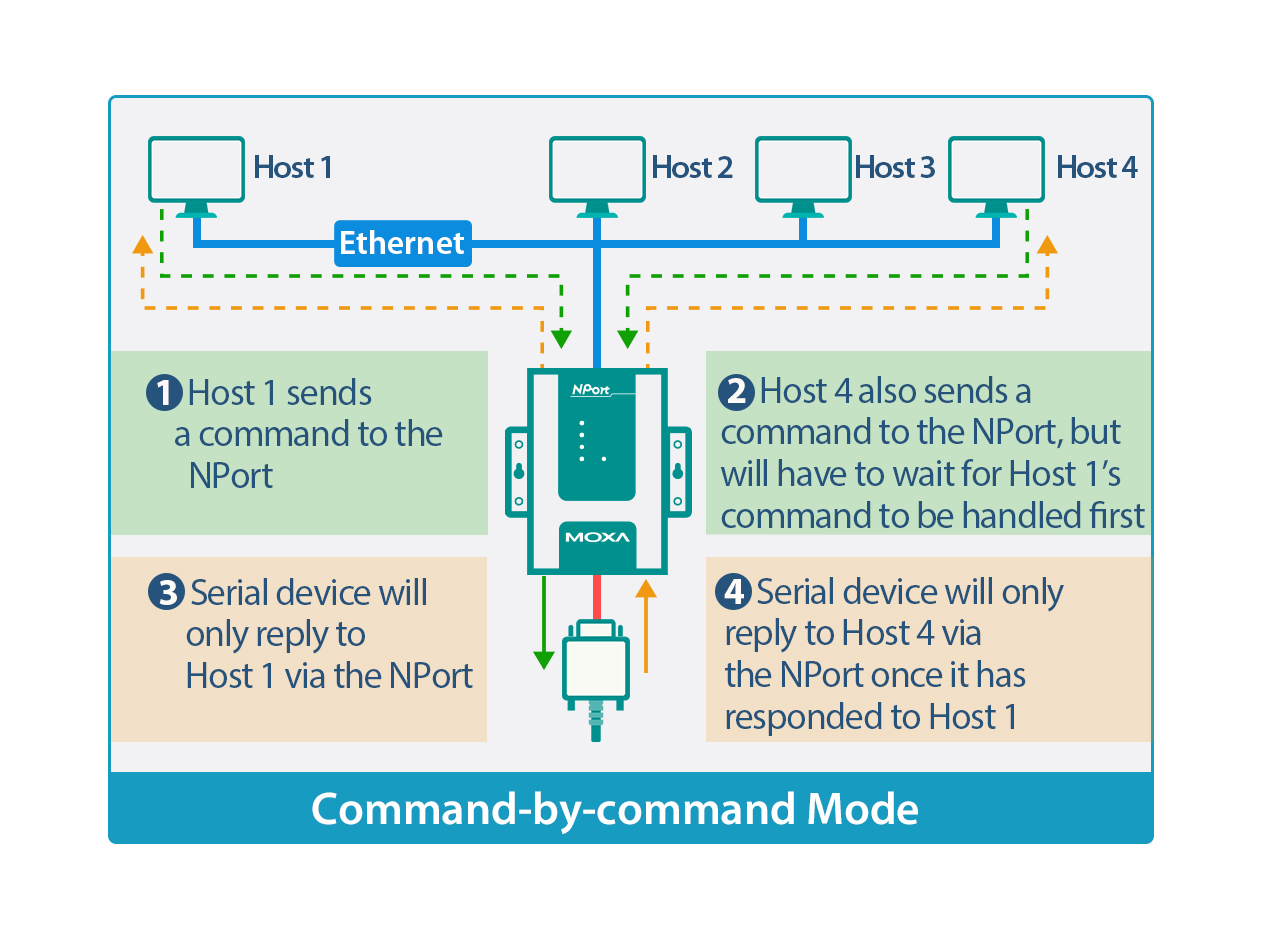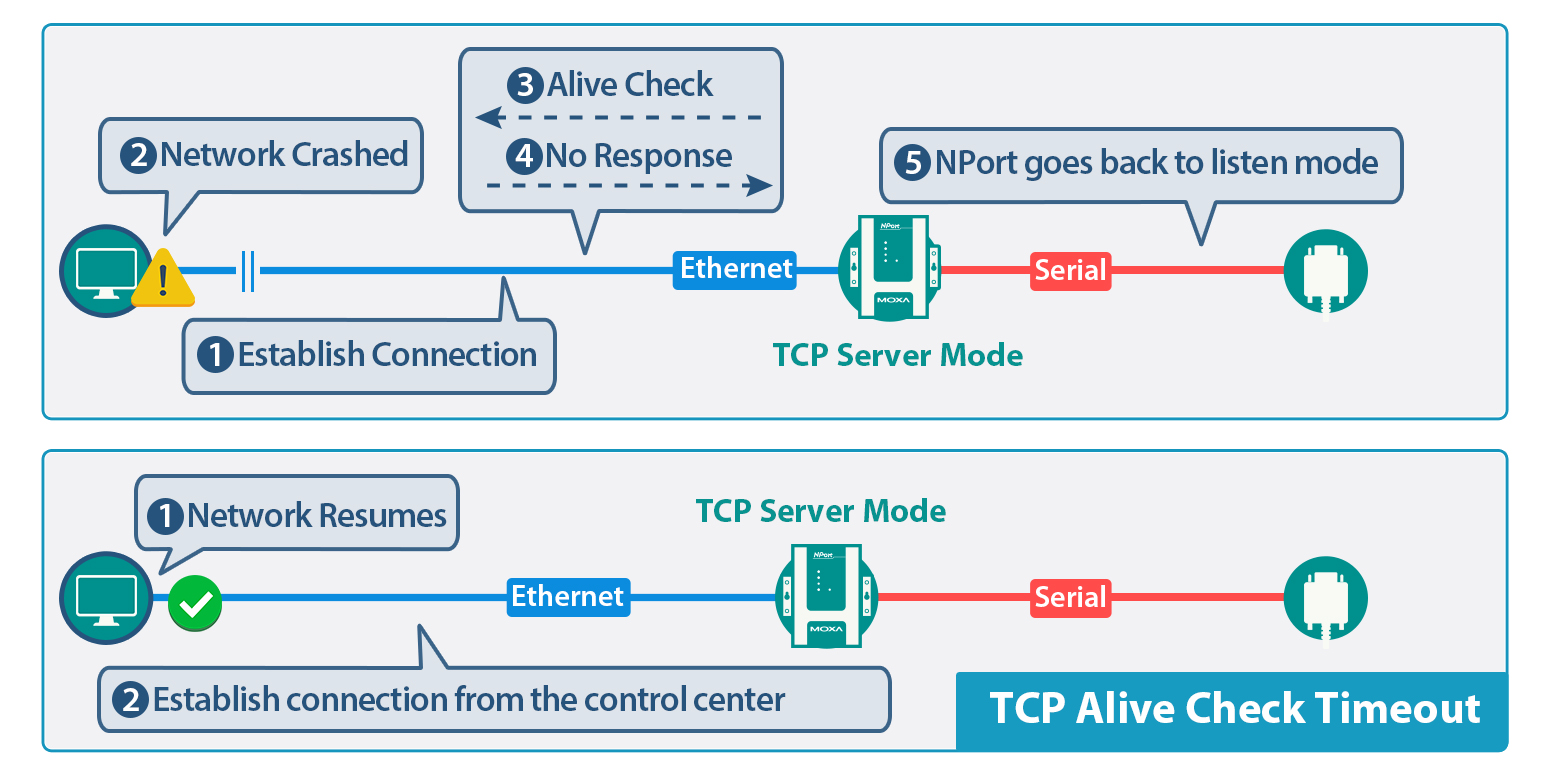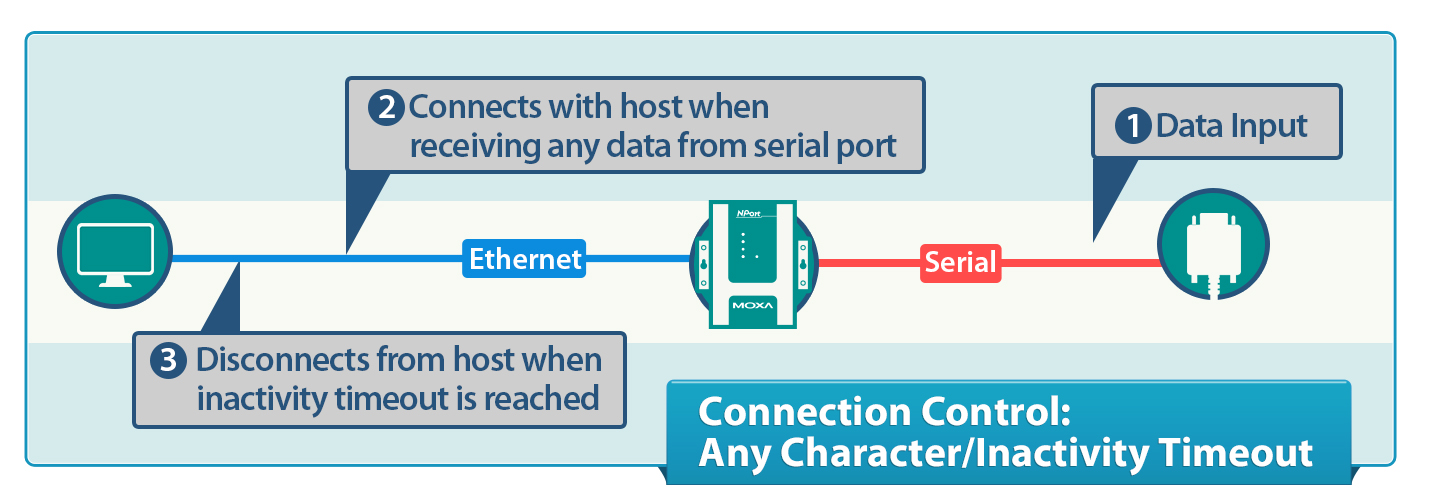By leveraging cutting-edge technologies, the possibilities for real-time remote monitoring of transportation systems across diverse regions have become tangible, marking the advent of intelligent transportation systems. However, several legacy devices at roadside locations and stations are still reliant on serial communications. In addition to identifying a serial-to-Ethernet solution that empowers you to facilitate remote monitoring applications from roadside locations to the central control hub, you also require advanced serial-to-Ethernet communication technology to address obstacles such as long-distance communications and intricate communication needs in large-scale applications. For a user-friendly serial-to-Ethernet solution, our NPort serial device servers offer various operational modes to simplify the process of transmitting and receiving serial data over TCP/IP networks. In this article, we present communication challenges in diverse application scenarios and how you can utilize the TCP/UDP operational mode, which is a key feature in our NPort serial device servers, to optimize serial-to-Ethernet communication for your intelligent transportation applications.
Scenario 1: Real-time Monitoring of Road Traffic
A wide array of controllers and sensors at roadside locations collect data on both traffic flow and environmental conditions. Situated miles apart, these on-field devices must communicate with traffic control centers to furnish operators with up-to-the-minute road status updates. Similarly, operators need to swiftly relay information to road users regarding traffic congestions and severe weather conditions. In gathering field data for such extensive applications and converting it into pertinent information for road users, operators may face challenges in managing multiple serial data requests from various application programs and encountering extended response times during critical incidents.
How the NPort Can Assist
Enhance Data Transmission Accuracy With a Command-by-command Feature
Our NPort serial device servers support TCP server mode, which is commonly used in remote monitoring applications to establish connections with field sensors like traffic controllers, road sensors, and other device types. Central systems housed in the control center, running TCP-client programs, initiate connections with the NPort, create links, and receive serial data from field devices. When multiple hosts simultaneously reach out to the NPort, our TCP server mode incorporates the Max Connection function to facilitate multiple hosts in accessing serial data from the same field device concurrently. Although this feature enables multiple command requests, it might result in potential data conflicts. To mitigate such conflicts, we have devised the Command-by-command function to avoid collisions among serial data when activating the Max Connection feature. The Command-by-command function enables the NPort to store commands in its buffer upon receiving a command from any host on the Ethernet. These commands are sequentially dispatched to the serial ports on a first-in, first-out basis. Subsequently, after receiving a response from the field device, the NPort stores the response in its buffer and forwards it to the source of the command.

How the NPort Can Aid
Minimize Network Recovery Duration With TCP Alive Check Timeout Function
When the host actively establishes a TCP connection (while the NPort acts as a passive TCP server awaiting client connections), the NPort lacks the means to ascertain network failures and continues operations as if the connection persists. Even if the network connection is restored, the client is unable to reestablish communication with the device due to occupied resources. Consequently, manual intervention is necessary at the field site to restart the NPort and release the resource, resulting in significant labor and time inefficiencies. To address this concern, the TCP server mode incorporates a TCP Alive Check Timeout function, offering a fail-safe mechanism to the NPort in case of network disconnections. This function furnishes the NPort with the Ethernet connection status by periodically verifying the TCP/IP connection status.

Scenario 2: Access Management Systems
Various intelligent transportation systems, such as parking systems and entrance gates at stations, deploy access control systems. These systems typically necessitate the constant collection of serial data via card readers and transmitting it over TCP/IP to multiple systems for authentication and payment computations. Connection failures can result in time and financial losses for users and operators alike. To boost connection reliability, it is imperative to ensure your serial-to-Ethernet solution can accurately transmit serial data over TCP/IP networks and deliver ample transmission bandwidth for backup systems.
How the NPort Can Support
Streamline Dispatch of Requested Serial Data With a Data Packing Feature
The NPort serial device servers feature TCP client mode, commonly utilized in access control systems to interface with serial card readers and other devices. In this scenario, data is routed back to the host application program for further processing. A common issue when transporting serial data across TCP/IP networks is the segmentation of data into separate Ethernet packets, leading to application program failures. Our NPort serial device servers offer Data Packing functions to ensure that serial data arrives intact in a recognizable packet, enabling the application to correctly receive and process requests. As the application typically identifies a specific character as the end of a data stream, the Delimiter function, one of our data packing functions, empowers the NPort to promptly aggregate and transmit all data in the buffer to the Ethernet upon receiving a designated character via its serial port. This facilitates the seamless reception of serial data by your payment system.

How the NPort Can Facilitate
Optimize Connection Efficiency With Connection Control Feature
When configured in TCP client mode, the NPort can determine the initiation or termination of a TCP connection with the host by activating the Connection Control function. This function allows you to regulate the number of TCP connections to essential ones and enhance host server efficiency by automatically disconnecting dormant connections. Various events can trigger the establishment or disconnection of a TCP connection, with a prevalent event being Any Character/Inactivity Timeout. In this scenario, any serial data activity triggers the NPort to establish a TCP connection with the host. If serial activity is absent for a specified period, the NPort disconnects the TCP connection until serial data activity resumes. Employing the Max Connection function allows you to link backup hosts for serial data collection without worrying about bandwidth consumption.

Scenario 3: Passenger Information Displays
Passenger information systems are pivotal in furnishing commuters with real-time transport information in smart transportation setups. Operators must disseminate (or multicast) identical messages to a set of LED displays to present data like train schedules at stations or road conditions on highways. This application necessitates swift data transmission to enable commuters to promptly adjust their travel routes upon receiving real-time information.
How the NPort Can Assist
Accelerate Data Transmission Throughput With UDP Mode
For applications requiring real-time data transmission and utilizing the UDP protocol in socket programs, configuring the NPort to UDP mode is beneficial. The primary distinction between UDP and TCP server/client modes lies in the fact that UDP mode does not mandate connection establishment before data transmission, facilitating faster data transfer when compared to TCP server/client mode due to the elimination of TCP’s three-way handshakes. UDP mode is well-suited for applications necessitating real-time data transmission and capable of tolerating potential data losses.
In UDP mode, a multicast IP address can be assigned to each serial port, ensuring that all devices subscribed to a common multicast IP address receive the message allocated to that IP address. The advantage of multicast lies in its efficient broadcast of messages to multiple destinations while conserving valuable bandwidth by eliminating redundant data transmissions to different destinations.
Our NPort serial device servers encompass an array of functionalities tailored for diverse operational modes to cater to your requisites in industrial applications. You can access our guide for additional insights into other features. Moreover, our NPort serial device servers incorporate security measures and diverse OS driver support to facilitate seamless and secure connections for your serial devices within contemporary systems. Explore more about how our serial connectivity solutions can propel your serial devices into the networking landscape of tomorrow.
- Not Only for Automobiles: Discovering CANbus Technology in Various Industrial Settings - October 29, 2024
- Boost Your Network Performance: An Exciting Manual to PoE Switches! - September 10, 2024
- Understanding Gigabit Switches: Industrial vs Regular Gigabit - September 4, 2024


